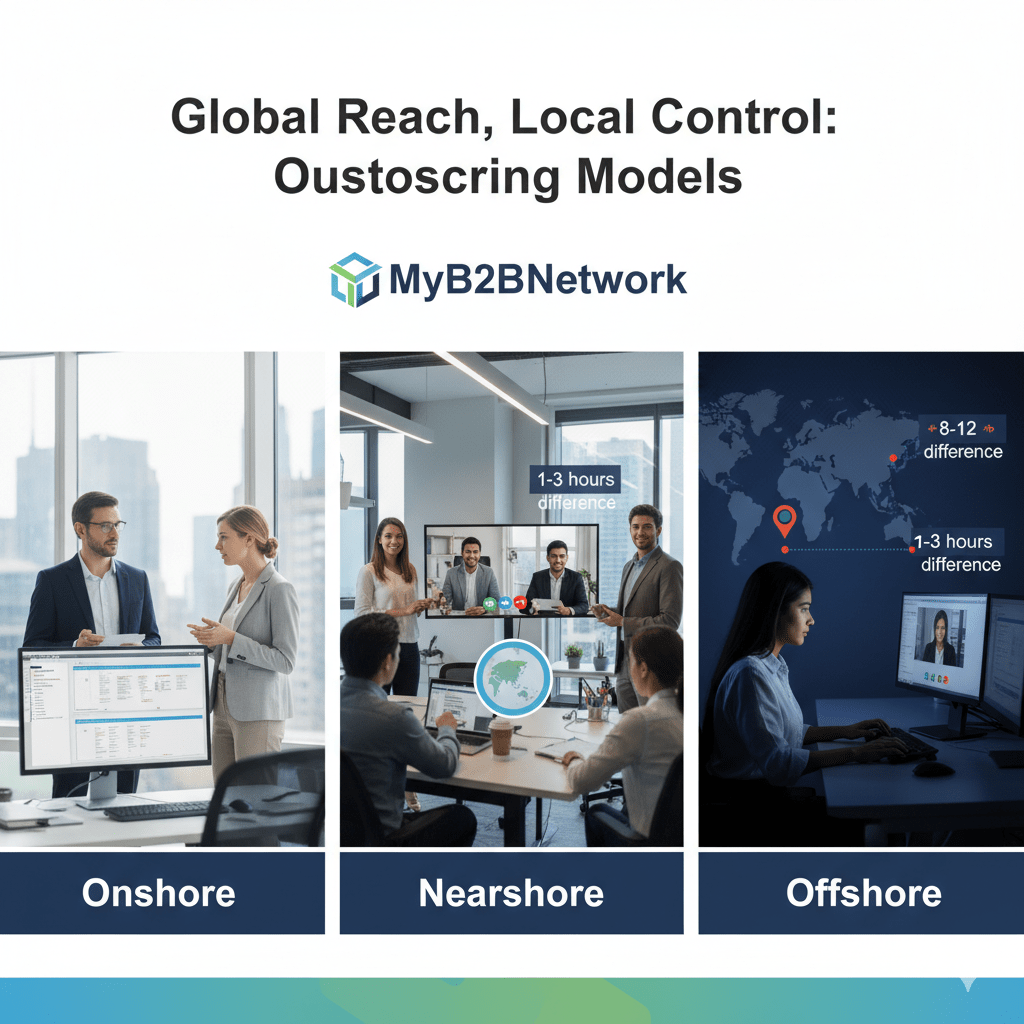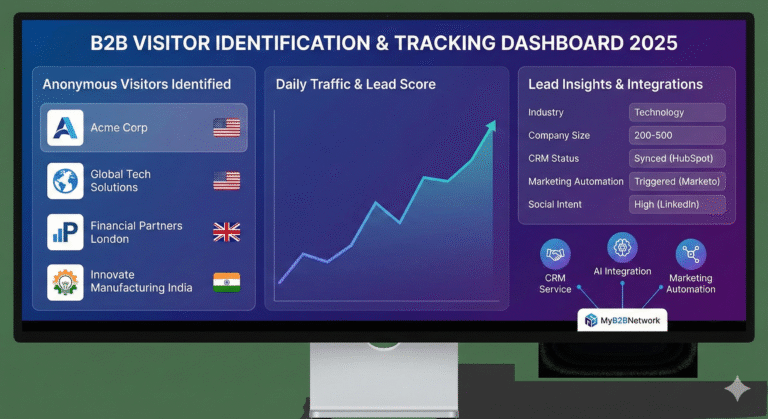
You’re a leader at a B2B company—a CTO, VP of Operations, or Procurement Manager—and you’ve been tasked with finding significant cost savings. Outsourcing models seems like the obvious answer.
But here’s the catch: that nagging fear that chases away sleep. Will you lose control? Is communication become a cultural clash nightmare? Will critical projects like AI Development Services or essential IT services fall victim to time zone delays?
This tension between cutting costs and maintaining absolute control is the core challenge in outsourcing. Luckily, the solution isn’t about choosing one or the other; it’s about choosing the right location. The global B2B landscape is defined by three geographic outsourcing models, each offering a distinct compromise.
The Three Geographic Outsourcing Models, Simplified
Outsourcing success hinges on understanding one simple thing: distance equals risk, but also potential savings. Here is a breakdown of the three key models in plain language:
1. Onshore Outsourcing (Hiring Locally)
- What It Is: You hire a provider located in the same country as your business (e.g., a New York firm hiring a team in Texas).
- The Trade-Off: This is the safest option, providing perfect language alignment, cultural fit, and seamless daily interaction. You maintain maximum control. However, this is also the highest cost model, as you are still paying domestic wages.
2. Offshore Outsourcing (Hiring Across the Globe)
- What It Is: You hire a provider located in a faraway country with significant time zone differences (e.g., a US company hiring in India or the Philippines).
- The Trade-Off: This model offers the cheapest rates due to labor cost arbitrage. The drawback? It carries the highest risk of communication delays, cultural misunderstandings, and losing real-time control. Daily meetings become a logistical headache.
3. Nearshore Outsourcing (Hiring in a Nearby Region)
- What It Is: You hire a provider in a neighboring country or a country within a similar time zone (e.g., a company in the US or Canada hiring a team in Latin America, or a UK company hiring in Eastern Europe).
- The Trade-Off: This model is increasingly viewed as the best balance. You get significant cost savings compared to Onshore, but you minimize the communication risk and time zone gap associated with Offshore. It’s ideal for projects that require continuous, fast feedback, like modern Technology Services or Marketing Automation implementation.
MyB2BNetwork
Discover how to unlock target markets and hit your number with insight-driven engagement.
Choosing Your Model: Cost vs. Collaboration
The decision comes down to one critical factor: how much daily interaction does your project need?
If your project requires rapid, continuous feedback (like Agile development or real-time support), an eight-hour time difference is a nightmare. This pushes you toward Onshore or Nearshore. If your work involves long-term, self-contained tasks with minimal communication, Offshore savings might be worth the trade-off.
The table below summarizes the key trade-offs:
| Model | Geographic Proximity | Time Zone Overlap | Relative Cost | Project Control | Ideal for… |
| Onshore | Same Country | High (Seamless) | Highest | Highest | Highly sensitive projects, leadership roles. |
| Nearshore | Nearby Country | Medium to High (1-4 hours) | Medium | High | Agile teams, fast-paced development, frequent collaboration. |
| Offshore | Distant Country | Low (Minimal) | Lowest | Medium-Low | Repetitive tasks, 24/7 support (follow-the-sun), large cost savings. |
The Rise of Strategic Partnerships and Nearshoring
The outsourcing landscape is shifting. Companies are moving away from purely cost-driven decisions to focus on strategic partnerships that maximize business value, as detailed in recent Harvard Business Review studies.
The fastest-growing trend is Nearshoring. This model is attractive because it addresses geopolitical risk and cultural compatibility while still delivering substantial savings. It’s an essential consideration as companies redefine the future of global operating models.
For instance, companies focused on digital transformation often adopt a Hybrid Outsourcing approach—using Onshore management to oversee Nearshore execution—to achieve both cost efficiency and quality control.
The complexity of Offshore contracts requires a thorough review of BPO industry benchmarks to ensure compliance and quality delivery.
Ready to Find Your Ideal Outsourcing Partner?
Stop compromising on quality for cost, or control for savings. The answer lies in the right geographic model.
MyB2BNetwork specializes in connecting B2B leaders like you with vetted providers for high-quality IT Services, Technology Services, and AI Development Services. We simplify the entire process from defining your needs to securing the deal and ensuring safe transactions.
Don’t let time zones dictate your success.
Connect with us today to find the ideal Onshore, Nearshore, or Offshore partner that fits your project’s budget and control requirements.
Now that you’re here
MyB2BNetwork generates new leads, offers insight on your customers
and can help you increase your marketing ROI.
If you liked this blog post, you’ll probably love MyB2BNetwork, too.



